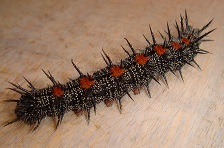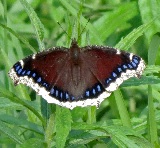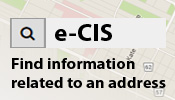Spiny Elm Caterpillar
What are spiny elm caterpillars?
The spiny elm caterpillar (Nymphalis antiopa) is the immature larval stage of the Mourning Cloak butterfly. The larva hatch from egg clusters that are laid in a ring around branches by the adult female butterfly. Once they hatch they will feed in clusters and consume all the leaves on a single branch before moving to another branch to feed. Caterpillars will feed for 5 to 6 weeks. When the caterpillars have finished feeding they will hang from a branch and form a chrysalid or cocoon. They will emerge as an adult Mourning Cloak butterfly approximately 3 weeks later.
The Mourning Cloak butterfly is unusual in that it is one of a few butterflies to overwinter as an adult in tree cavities and wood piles. The Mourning cloak butterfly can sometimes overwinter as a pupa. This is why the Mourning Cloak butterfly is one of the first butterflies to be seen in the spring. The spiny elm caterpillar is native to North America and in Canada has appeared in insect surveys dating back to the 1930's.
What does the spiny elm caterpillar look like?
The spiny elm caterpillar is about 5 centimeters in length. They are mostly black and spiny with small white speckles on their surface. Along their back is a row of red spots running between their spikes.
The adult butterfly is considered to be a medium butterfly with a wingspan between 6 and 7 centimeters. The Mourning Cloak has velvety wings that range from black to a dark red colour with a bright yellow band along the border of it's wings. Between the yellow border and the dark inner portion of their wings is a row of light blue spots.

|
 Photo credit: James St John |
What does spiny elm caterpillar damage look like?
The spiny elm caterpillar feeds on the foliage of elm trees, but also foliage of willow, birch, cottonwood and hackberry. Their presence is signified by defoliation of entire branches and the presence of the spiny elm caterpillar. Spiny elm caterpillars rarely injure healthy trees and control is seldom necessary. Sometimes they appear in high enough numbers to warrant control.
How can I control spiny elm caterpillars?
A tree is normally very tolerant of some defoliation and control efforts are unnecessary when only a few larval caterpillars are present. However, at times when the caterpillar populations are high, it may be necessary to control them with the use of biological products or chemical pesticides. Biological products like Safer's BTK™ Biological Larvicide contain the active ingredient Bacillus thuringiensis var. kurstaki (Btk) to control caterpillars. These products can be found at most local hardware stores. All Pest Control products purchased and used must be registered with Health Canada and contain a Pest Control Product (P.C.P. or PCP) Number on their label. Whenever you use a pesticide, always follow label directions.Treat small caterpillars as soon as they are noticed for best results. Handpick or prune to remove caterpillars if possible.


